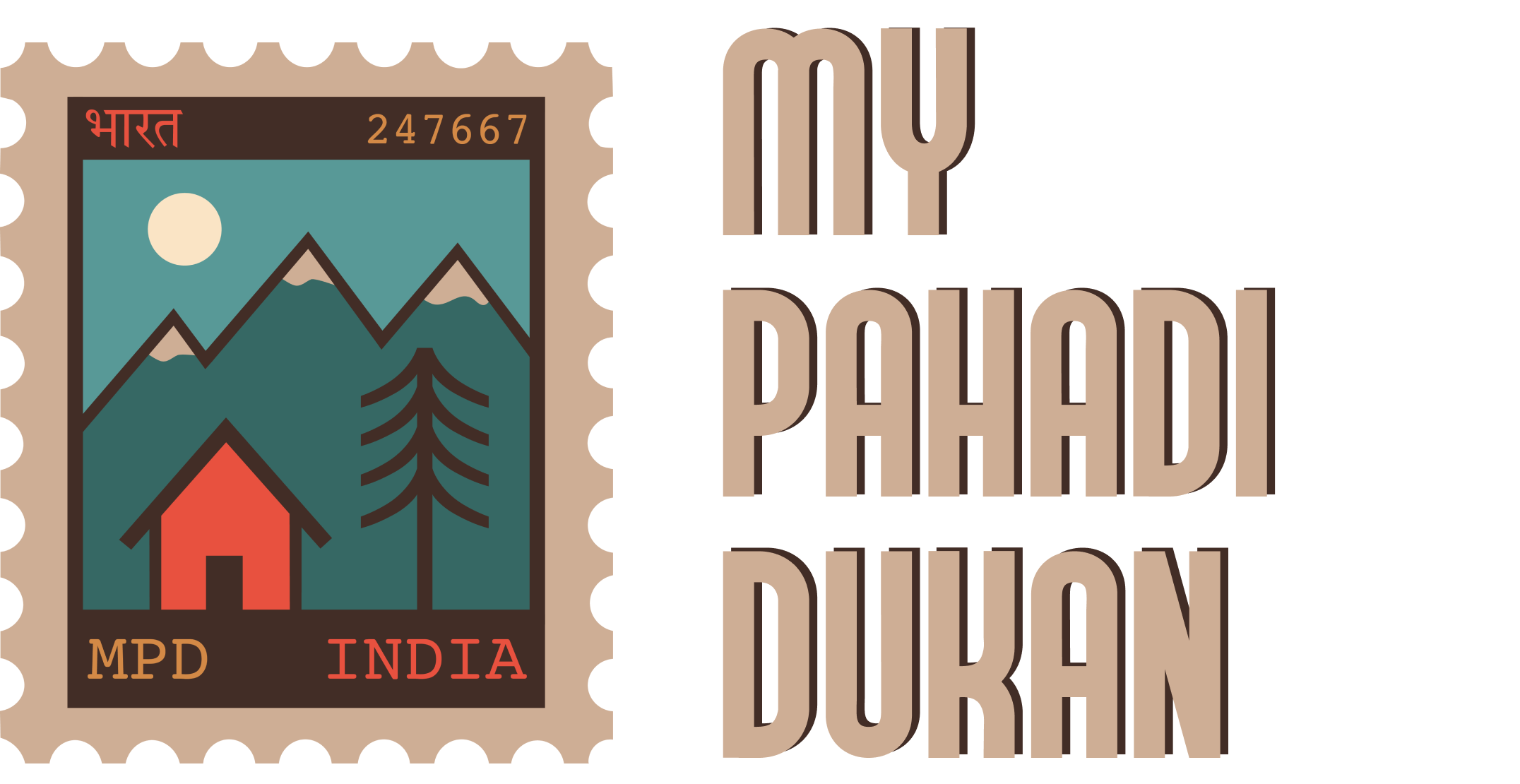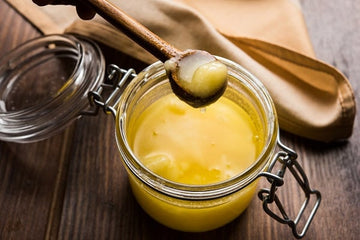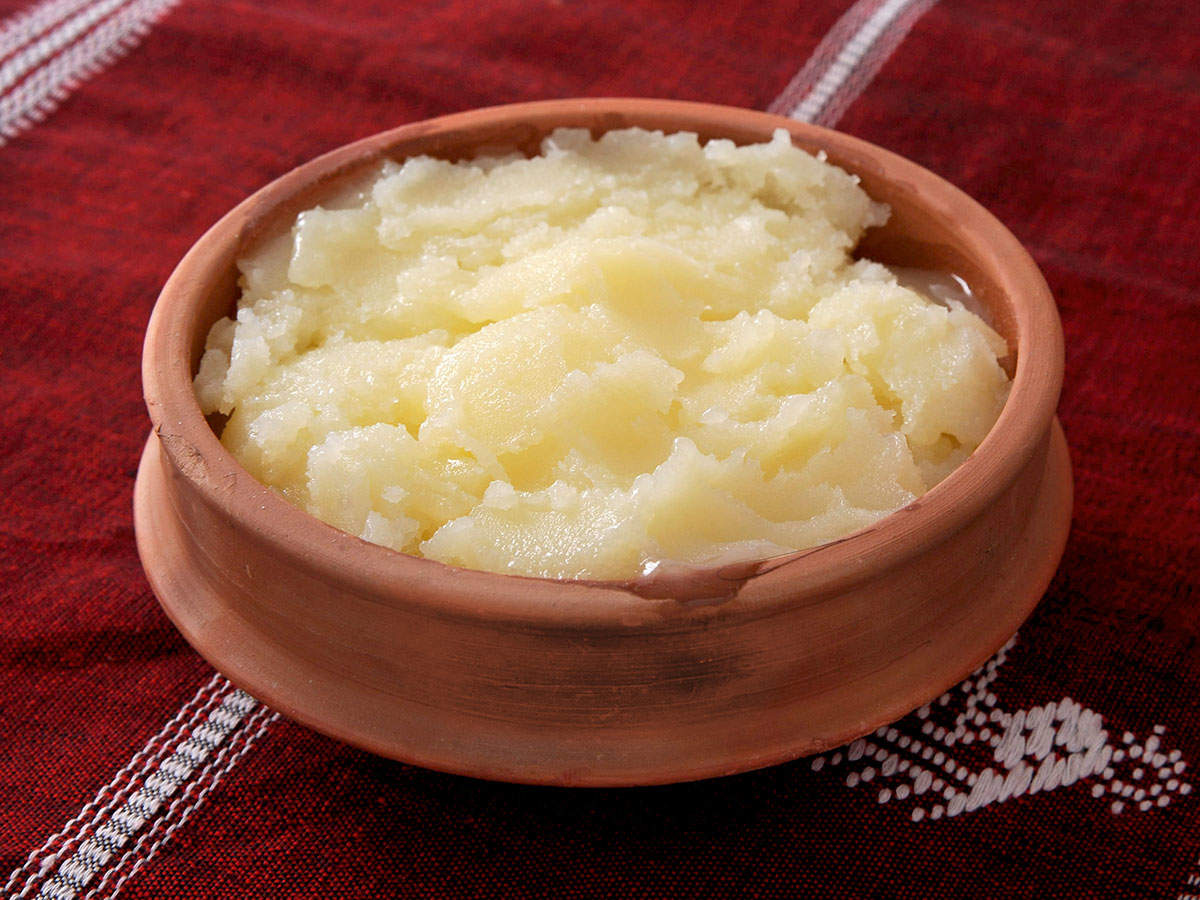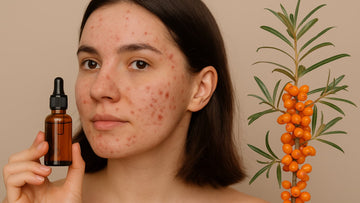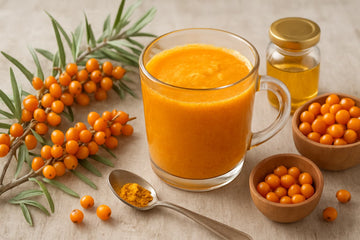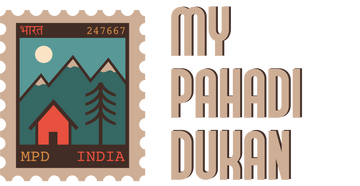Ghee is a type of clarified butter. It’s more concentrated in fat than butter, as its water and milk solids have been removed.
It has been used in Indian culture for thousands of years. The term comes from the Sanskrit word meaning “sprinkled.” Ghee was created to prevent the butter from spoiling during warm weather.
We all know that milk is a good source of protein. However, ghee is pure fat but contains a very small amount of protein as well. There are two types of protein found in milk called casein and whey. There are also different types of casein protein, one of which is beta-casein. A1 & A2 are actually two variants of beta-casein that makeup about 30% of total protein in cow’s milk. Traditionally in India, cows produced milk that contained only the A2 form of beta-casein, but today, most of the milk available in local stores contains mostly A1 proteins.
What Is A2 Ghee?
A2 ghee is a type of clarified butter made from the milk of native Indian cows like Gir or Sahiwal. These cows produce only the A2 type of beta-casein protein, which is considered easier to digest.
Ghee has been used in Indian cooking and rituals for thousands of years. It’s made by slowly heating butter to remove water and milk solids, leaving behind pure fat.
Unlike regular ghee, which often comes from crossbred cows that produce both A1 and A2 proteins, A2 ghee contains no A1 protein. That’s why many people consider it a more natural and healthier choice.
The Difference Between A1 and A2 Cow Ghee
Reading the name, both types seem like brothers of the same family but there is a huge difference between their source and effect on health. Ghee when made using A2 milk which has only A2 Beta casein (a type of protein) is called A2 ghee. This type of protein is found in the milk of only some native Indian breeds of cows and some other animals like the Indian buffalo, goat, sheep, camel, etc.
On the other hand, ghee made from milk having only A1 beta-casein or sometimes both A1 and A2 beta-casein is called A1 cow ghee. A1 beta-casein is found in all commercial dairy products that we use in general due to foreign breed or crossbreed cows in India. It’s cheaper as the milking capacity of crossbred cows is greater than desi cows and the number of them is also huge.
| Factor | A2 Cow Ghee | A1 Cow Ghee |
| Source of Milk | Native Indian cow breeds (e.g., Gir, Sahiwal) | Crossbred or foreign cows |
| Protein Type | Only A2 beta-casein | A1 beta-casein or a mix of A1 & A2 |
| Digestibility | Easier to digest, suitable for lactose-sensitive people | May cause discomfort in some individuals |
| Availability | Limited, due to low-yield native breeds | Widely available due to high-yield cows |
| Nutritional Value | Considered more natural and traditional | Commercially processed, may lose some purity |
| Production Cost | Higher (lower milk yield per cow) | Lower (higher yield, mass production) |
| Price | Premium, due to limited supply and traditional methods | Generally cheaper |
| Animal Examples | Indian cow, buffalo, goat, camel, sheep | Crossbred Holstein, Jersey cows |
What are the Benefits of A2 Ghee?
Being higher in nutrition values such as protein, iron, sodium, calcium, vitamin A, D, E with Omega 3 and 9 fatty acids, A2 cow ghee has many health benefits.
- Slows the aging process and is good for skin & hair
- Helps recover from wounds
- Prevents diseases like asthma & headaches & alleviates insomnia
- Best for joint massage & treating broken bones
- Treats gastric issues
- Lowers bad cholesterol and does not cause blockages
- Great for people who are trying to lose weight
- Boost immunity
- Suitable for even lactose-intolerant people
- Reduces inflammation
- Excellent for growing kids and pregnant women
The Bilona process of making Ghee:

The traditional method of making ghee (bilona) is quite elaborate. Cow’s milk is boiled and cooled. Then a spoonful of curd is added to this milk and kept at room temperature overnight. The curd is then churned in a Bilona (Bi-directional butter churner) to extract butter from it. This butter is then boiled so that the water evaporates and milk solids separate leaving behind pure ghee.
As you can see, the process is quite slow and traditionally, all of this was made at homes without any use of machines.
To experience the benefits of A2 Cow Ghee for yourself, grab your jar today and enjoy an exclusive 10% off with our Ghee coupon!
Suggested read: Is Ghee Good for Health? Understanding Its Nutritional Value
Frequently Asked Questions
What is A2 Cow Ghee?
A2 Cow Ghee is a type of clarified butter made from the milk of native Indian cows like Gir and Sahiwal. These cows produce only A2 beta-casein protein, which is considered easier to digest.
How is A2 ghee different from regular (A1) ghee?
A2 ghee contains only A2 beta-casein protein, while regular ghee may have A1 or a mix of A1 and A2 proteins. A2 ghee is often easier on digestion and is made using traditional methods.
What are the health benefits of A2 Cow Ghee?
A2 ghee supports better digestion, improves skin and hair health, boosts immunity, and helps manage cholesterol. It is also suitable for lactose-intolerant individuals.
Can people with lactose intolerance consume A2 ghee?
Yes, A2 ghee is suitable for most lactose-intolerant individuals as it is free from milk solids and contains only trace amounts of lactose and casein.
How is traditional A2 ghee made?
A2 ghee is made using the Bilona method, where milk is turned into curd, churned to extract butter, and then slowly heated to produce ghee. This process preserves nutrients and flavor.
Why is A2 ghee more expensive than regular ghee?
A2 ghee is made from the milk of native cows, which yield less milk and require traditional processing. This makes the production cost higher, leading to a premium price.
What is the ghee process?
The ghee process involves heating unsalted butter on low flame until water evaporates and milk solids separate. The remaining clear fat is strained and stored as pure ghee.
How to make ghee from cow milk?
Making ghee from cow milk is simple and traditional. First, boil fresh cow milk and let it cool. Add a spoonful of curd and keep it overnight to make curd. Then, churn the curd to separate butter from buttermilk. Melt the butter on low heat until water evaporates and milk solids turn golden brown. Strain the liquid fat to get pure ghee. Store it in an airtight container once cooled
